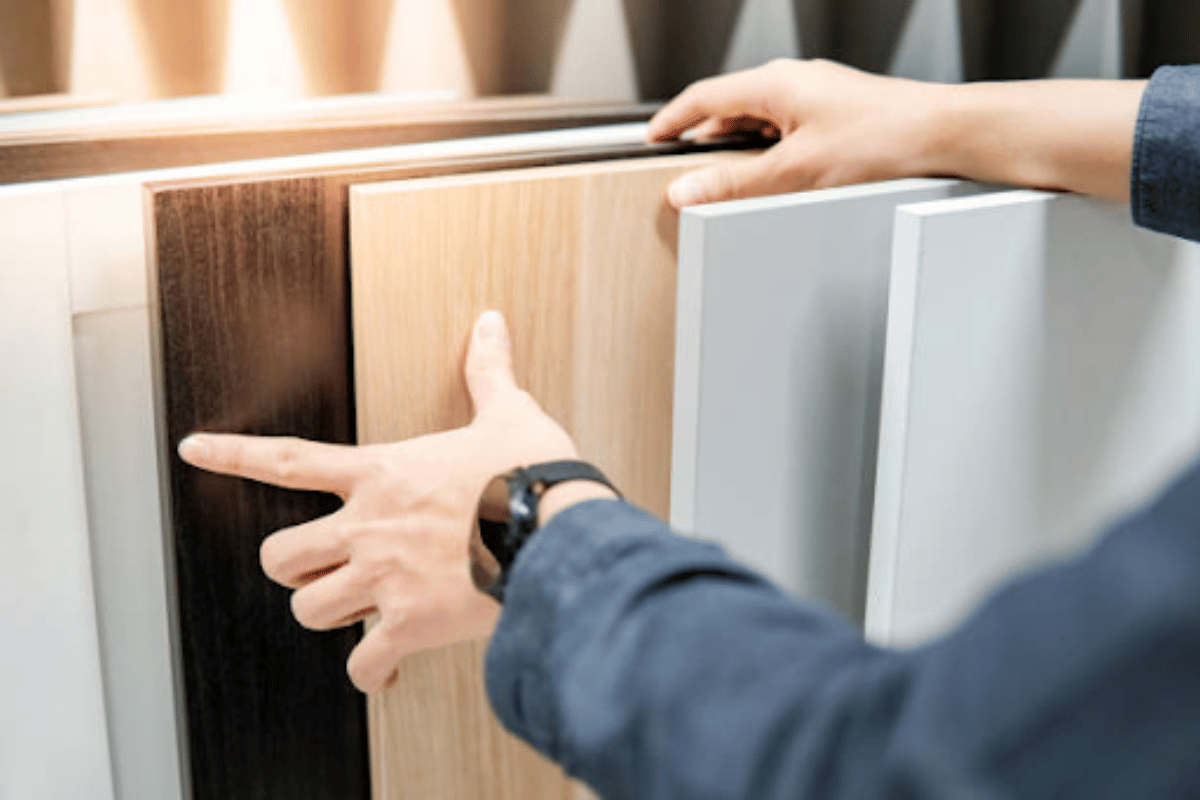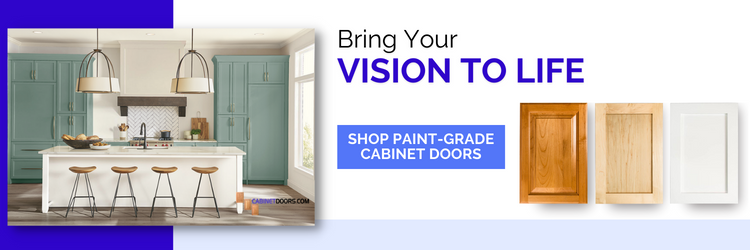5 Tips for a Professional-Looking Finish on Cabinets
Posted by Donovan Thornhill on Aug 1st 2024
Are you replacing the cabinet doors in your kitchen or bathroom? Want a low-cost upgrade with a professional finish? There are many ways to complete a DIY home renovation to achieve your desired cabinet door finish. However, if you don't use the right tools and techniques, you may not get the expected professional finish for the cabinet doors you were expecting.
In this article, we'll walk you through everything you need to know to achieve a smooth finish on cabinet doors. Here are five tips to help you get started on your project:
Tip One: Prepare The Cabinets
The preparation stage is arguably the most important part of the process. You may not achieve your desired finish without cleaning, sanding, or repairing the cabinet door imperfections. To prep the cabinets for your project, you'll want to start by:
Cleaning
Start by cleaning your current cabinets with mild soap and warm water. You'll want to eliminate any unwanted dirt or grime on the surface. Some cabinet door styles are easier to clean than others, so make sure you properly clean the intricate details and crevices.
Sanding
Once the cabinet doors are clean, it's time to sand them down. You'll need a range of grit paper to help remove the old finish and smooth the surface for the next one. It's best to start with 80-100 grit paper and work up to 120-150 grit. From there, you'll want to finish it with a 180-220 grit paper.
Repairing
Lastly, you'll want to repair any scuffs, dents, marks, or imperfections on the cabinet doors. If you skip this step, you may get an uneven finish when you paint them. The best way to repair cabinet doors is to use wood filler. Wood filler will fill in the imperfections before you move on to the next step.
Tip Two: Choose the Right Products
Next, it's time to shop for paints, primers, and finishes. There are many different brands and types of products to consider. Each has advantages and disadvantages. It's important to weigh the pros and cons to find the perfect fit for your project. Here's what you'll need:
- Primer: Before you paint your cabinets, you'll want to start with a high-quality primer. A primer can extend the longevity of your cabinet door finishes. It can also help seal and prep the wood for paint.
- Paint Types: The two most popular types are latex-based and oil-based paints. Latex-based paints dry quickly and offer mess-free cleanup, while oil-based paints are more durable and have a more professional look and feel.
- Finishes: There are three finishes: High gloss, semi-gloss, and satin. When exploring the different types, it's best to consider your desired aesthetic finishes.
Tip Three: Invest in High-Quality Tools
The tools you choose for the project will make all the difference for the application. Tools you'll want to have for the project include:
- Paint rollers
- Paintbrush
- Electric sander
- Sandpaper
- Paint trays
- Cleaning supplies
Tip Four: Apply Multiple Coats
You may need to apply multiple coats of paint before you get your desired finish for the project. After each layer of paint, you'll need to wait and let the paint dry. If the cabinet door needs another coat, sand it down and repeat the process.
Applying multiple coats of paint will help you get better coverage, make the color more vibrant, and achieve a uniform finish. When applying several coats, you must add thin layers of paint each time. You also want to wait until the first layer completely dries before you start the next one.
Tip Five: Add a Topcoat
Adding a topcoat is the secret to achieving a professional finish for cabinet doors. A topcoat acts as a protective layer, extending the longevity of your cabinet doors and providing an elevated finish.
Different Topcoats
- Polyurethane: This is a durable topcoat that comes in various finishes. However, polyurethane topcoats have longer dry times than lacquer and wax finishes.
- Lacquer: A fast-drying top coat that features a high gloss finish. Lacquers are less durable than other topcoats but are easier to repair than other types.
- Wax Finish: Wax finishes are easy to apply and use on cabinet doors. They offer a smooth, natural finish but provide limited protection for cabinet doors in high-trafficked areas.
Application Tips for Topcoats
- Start by cleaning the surface with a gentle soap and warm water
- Review the drying and curing times for the top coat you choose to use
- Avoid applying a top coat in extreme heat or humidity to avoid an uneven finish
- If you need to apply multiple coats, make sure you sand down the cabinets between each one
Other Tips for a Professional Finish
Once you've prepped, sanded, painted, and prepared your cabinets, it's time to add the finishing touches. The finishing touches help tie in the other details in your space, helping you achieve a high-end, professional look. To get started, you'll want to:
- Invest in soft-close hinges
- Buy new cabinet door hardware
- Follow proper installation tips and guides
- Complete the look with matching drawer fronts
- Consider glass-ready cabinet doors
Shop Professional Finish Cabinet Doors Today

At CabinetDoors.com, all our cabinet doors are custom-made to fit your existing cabinets perfectly. We also have various cabinet door styles, wood species, and hardware. Whether you want a modern or vintage finish, we have a style you can use for your next home renovation project. If you want to avoid painting, sanding, or priming your cabinet doors on your own, you can also order cabinet doors with a factory finish from our website.
Shop our collection of cabinet doors for sale today.
Online Guides and Resources
- Best Cleaner for Wood Cabinets
- Unfinished vs. Finished Cabinet Doors: Which is Best for You?
- What is Conversion Varnish?
Frequently Asked Questions
How to finish cabinet doors?
After you apply paint and primer, you'll want to finish your cabinet doors with a high-quality, durable topcoat. The three most popular types of topcoats are polyurethane, lacquer, and wax finishes.
How to choose the right cabinet door finish?
Consider the desired finish you’re trying to achieve. Some finishes are more durable than others, while others have a more aesthetically appealing finish.
How to professionally finish a cabinet door?
Start by cleaning, sanding, and prepping the cabinet doors. This will help you achieve a clean base for the paint and topcoat.



